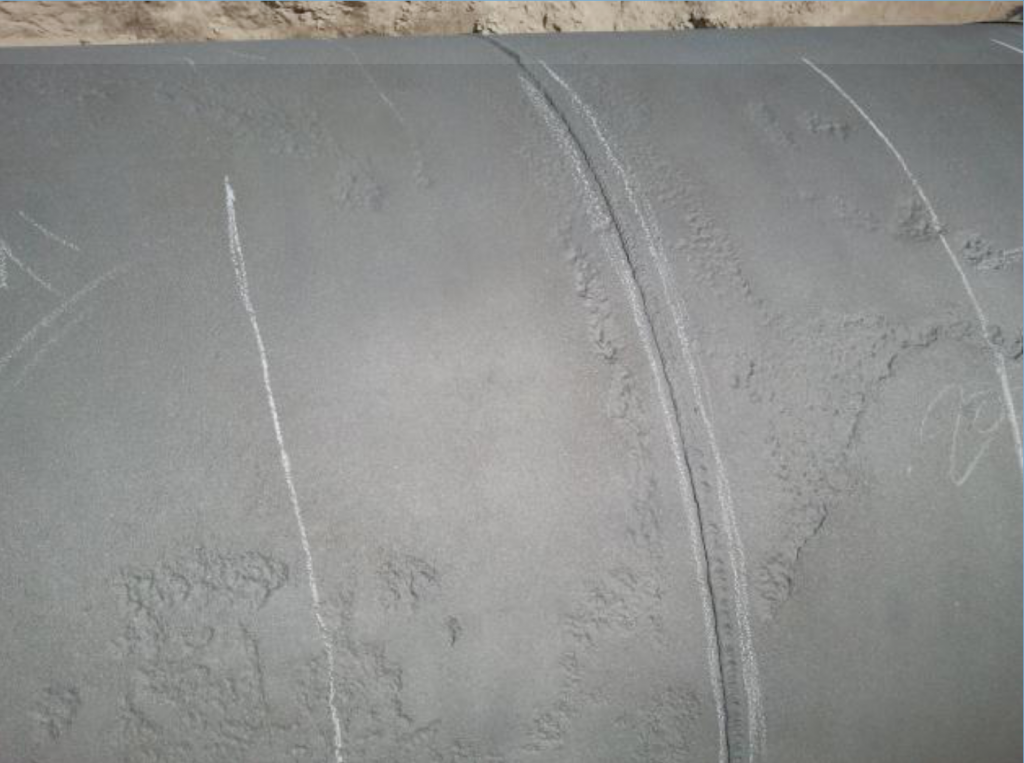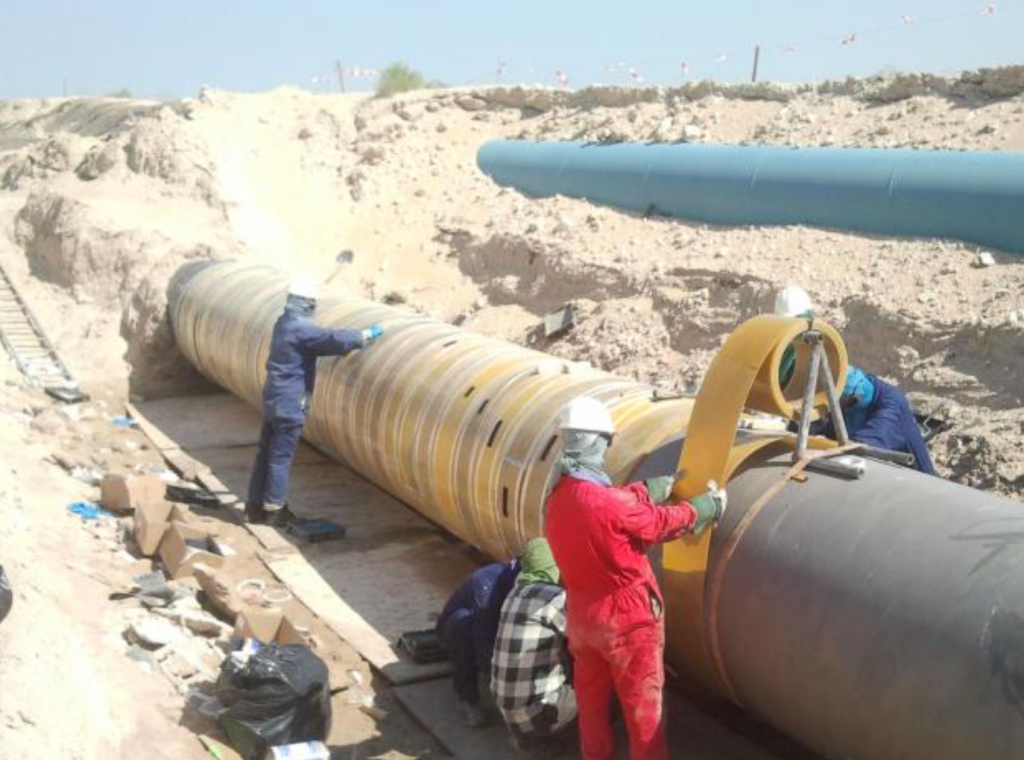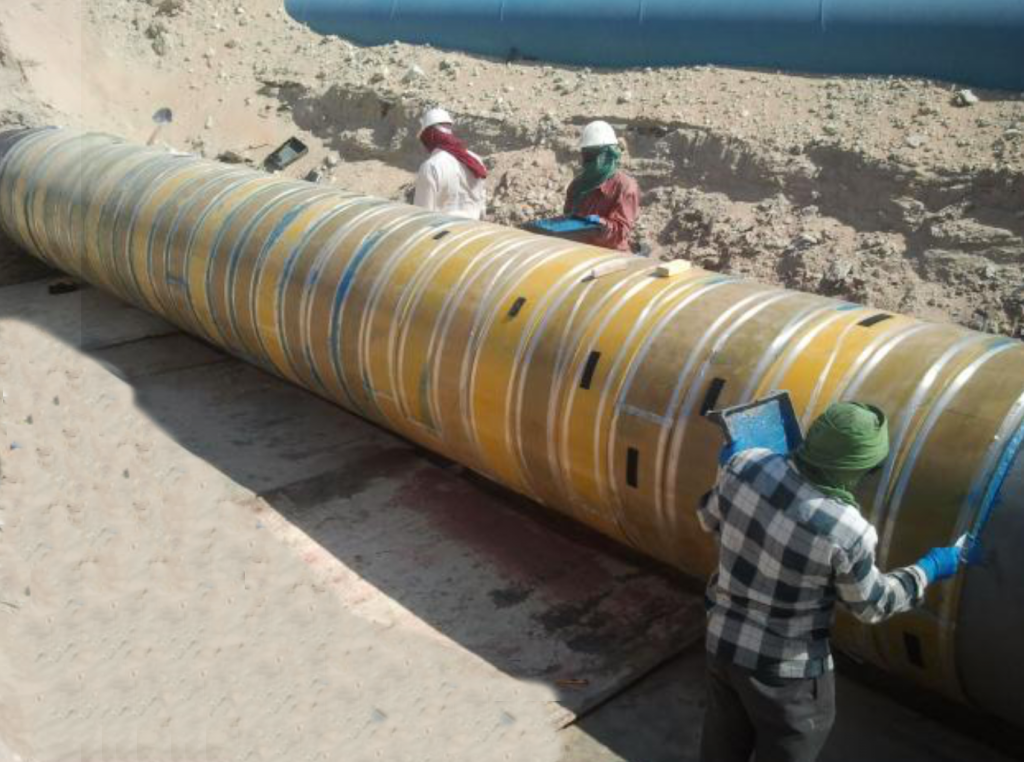Middle East
Pipe Details
- 1,219-m (48-inch) high-pressure oil export pipeline
- 55 bar (798 psi) pressure
- 40° C (104° F) operating temperature
Summary
- Extensive external corrosion of a petroleum export pipeline covering a 10-m (33-foot) length and involving a girth weld
- Trained and certified CSNRI technicians carried out repairs, installing Clock Spring repair sleeves to restore structural integrity.
- This type of repair can be performed in an exacting high-temperature environment of 120° C (248° F)
- The repair was executed in a process that took three 8-hr shifts
In carrying out an inspection of its petroleum pipeline network, a company discovered damage along a 10-m (33-foot) section of a 1,219-mm (48-inch) high-pressure export line. The line, which was operating under 55 bar (798 psi) of pressure, exhibited extensive corrosion over a length of pipe that included a girth weld. The weld, which connected two pipes joined along their circumference, required a repair that would ensure reliable joint strength was achieved, which made the repair particularly critical.
A team of CSNRI trained and certified technicians grit blasted the pipe to an SA 2.5 surface preparation, cleaning the damaged area to remove rust, coating, and mill scale to produce a near-white surface prior to the application of the Clock Spring repair sleeves. The team installed the Clock Spring repairs using a spool feeder to place the units on the pipeline because there was only 152 mm (6 inches) of clearance underneath the pipe.



The repair was completed over the span of three 8-hour work shifts. The team was able to restore the integrity of the line so it could continue to function safely.

